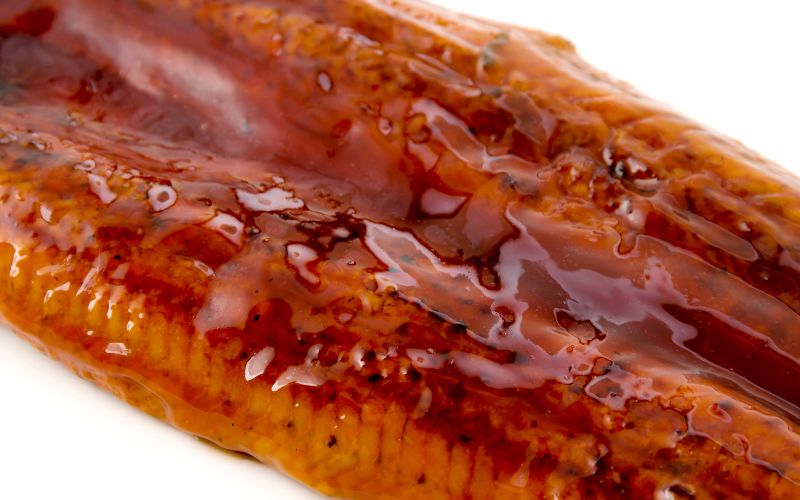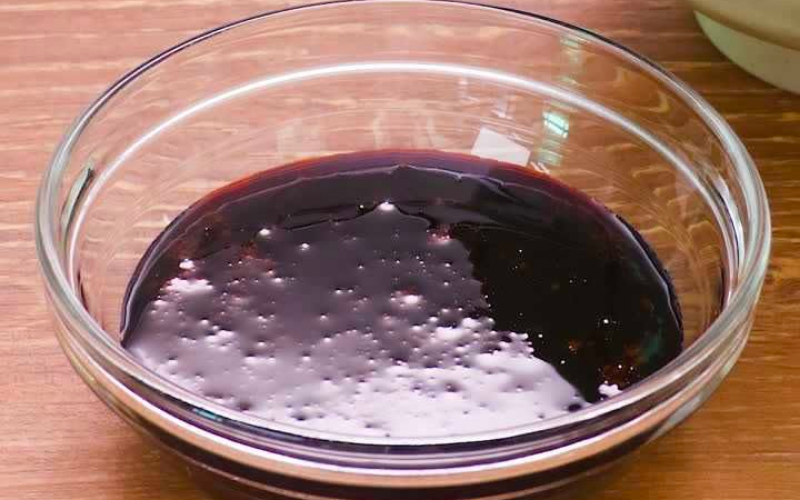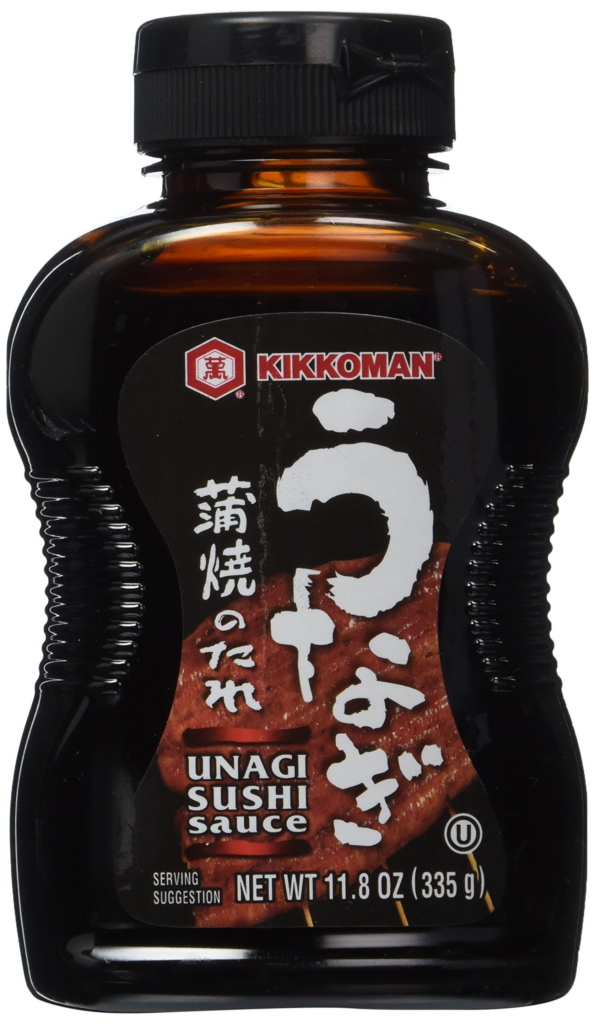When it comes to Japanese cuisine, the flavors are often a harmonious blend of sweet, savory, and umami. And one condiment that perfectly captures this essence is unagi sauce, also known as eel sauce. This versatile and delectable sauce has gained popularity both in Japan and around the world, adding a delightful touch to a wide array of dishes.
In this guide, we will explore the world of unagi sauce, from understanding its ingredients and learning how to make it, to discovering creative ways to use it in your cooking. We will also address frequently asked questions, share tips and substitutions, and guide you on where to find this delectable condiment.
What is Unagi Sauce?

Unagi sauce, also known as eel sauce, is a popular and versatile Japanese condiment that is commonly used in various dishes. It is a thick, sweet and savory sauce with a rich umami flavor. Unagi sauce gets its name from its traditional use as a glaze for grilled eel, known as unagi in Japanese cuisine. However, it has now become a staple in Japanese cooking and is used as a flavorful topping or marinade for a wide range of dishes.
Eel Sauce vs. Unagi Sauce

Eel sauce and unagi sauce are essentially the same thing, with the terms often used interchangeably. The term “eel sauce” is more commonly used in Western countries, while “unagi sauce” is the traditional Japanese term. Despite the name, eel sauce does not necessarily contain eel as an ingredient. It is called eel sauce due to its traditional association with grilled eel dishes.
Both eel sauce and unagi sauce are characterized by their dark, caramel-like color and sticky consistency. The sauce is made by combining a base of soy sauce, mirin (a sweet rice wine), sugar, and sometimes other ingredients like dashi (Japanese soup stock) or sake. The mixture is then simmered until it thickens into a syrupy texture.
While unagi sauce is commonly used with grilled eel, its sweet and savory flavor profile makes it a versatile condiment that can enhance the taste of many other dishes. It can be drizzled over sushi rolls, sashimi, grilled meats, vegetables, rice bowls, or used as a dipping sauce for tempura or gyoza.
Now that we understand the basics of unagi sauce, let’s explore the ingredients and learn how to make it from scratch.
Unagi sauce recipe

Ingredients for Unagi Sauce
To make homemade unagi sauce, you will need the following ingredients:
- Soy sauce: Provides the base flavor for the sauce. Opt for a good-quality soy sauce to ensure a rich and balanced taste.
- Mirin: A sweet rice wine that adds sweetness and depth to the sauce. If you don’t have mirin, you can substitute it with a combination of rice vinegar and sugar.
- Sugar: Adds sweetness and helps create the thick, sticky texture of the sauce.
- Dashi (optional): A Japanese soup stock that enhances the umami flavor of the sauce. It is typically made from kombu (kelp) and bonito flakes. If you don’t have dashi, you can omit it or use a vegetable-based broth as a substitute.
- Sake (optional): A Japanese rice wine that can add complexity to the sauce. If you have sake on hand, you can include it for additional flavor depth.
- Water: Used to dilute the sauce and adjust the consistency, if needed.
Equipment Needed
The equipment required for making unagi sauce is minimal:
- Saucepan: A medium-sized saucepan to simmer and reduce the sauce.
- Whisk or spoon: To stir and combine the ingredients.
- Measuring utensils: To accurately measure the ingredients.
- Storage container: A jar or bottle with a tight-fitting lid to store the prepared sauce.
With the ingredients and equipment ready, let’s move on to the step-by-step instructions on how to make unagi sauce.
How to Make Unagi Sauce?

Follow these step-by-step instructions to make your own delicious unagi sauce:
- In a saucepan, combine 1 cup of soy sauce, 1/2 cup of mirin, and 1/4 cup of sugar. If using dashi and sake, add 1/4 cup of dashi and 1/4 cup of sake as well.
- Place the saucepan over medium heat and stir the mixture until the sugar dissolves completely.
- Once the sugar has dissolved, reduce the heat to low and let the sauce simmer gently. Allow it to cook uncovered for about 20-30 minutes, stirring occasionally. This will help the sauce thicken and develop a rich flavor.
- Keep a close eye on the sauce to prevent it from burning or boiling over. Adjust the heat as needed to maintain a gentle simmer.
- After 20-30 minutes, the sauce should have reduced and thickened to a syrupy consistency. You can test the consistency by dipping a spoon into the sauce and checking if it coats the back of the spoon.
- Once the desired consistency is achieved, remove the saucepan from the heat and let the sauce cool down to room temperature.
- Once cooled, transfer the unagi sauce to a clean, airtight container such as a jar or bottle. Seal it tightly with a lid and store it in the refrigerator.
Tips to Make the Best Unagi Sauce
- Use high-quality soy sauce and mirin for the best flavor.
- Adjust the sweetness according to your taste preferences by adding more or less sugar.
- If you prefer a thicker sauce, you can simmer it for a longer duration to reduce it further.
- For a smoother texture, strain the sauce through a fine-mesh sieve before storing.
How to Use Unagi Sauce?

Unagi sauce is a versatile condiment that can enhance the flavor of various dishes. Here are some traditional and creative ways to use unagi sauce:
- Drizzle over grilled eel (unagi): Unagi sauce is traditionally used as a glaze for grilled eel. Simply grill or broil eel fillets and brush them with the sauce during the cooking process. Serve with steamed rice for a classic Japanese meal.
- Sushi and sashimi: Drizzle unagi sauce over sushi rolls or sashimi for an added layer of sweetness and umami flavor. It pairs particularly well with eel, shrimp, or crab rolls.
- Rice bowls (donburi): Use unagi sauce as a topping for rice bowls. It adds a delicious sweet and savory element to dishes like gyudon (beef bowl), katsudon (breaded pork cutlet bowl), or oyakodon (chicken and egg bowl).
- Yakitori and grilled meats: Brush unagi sauce onto skewered grilled meats like chicken, beef, or pork. The sauce will caramelize and impart a rich, savory glaze.
- Stir-fries and noodles: Add a splash of unagi sauce to stir-fries or noodle dishes for a burst of flavor. It works well with both vegetable stir-fries and meat-based dishes.
- Marinades and dressings: Incorporate unagi sauce into marinades for meats or vegetables to infuse them with its sweet and savory profile. It can also be used as a base for salad dressings or dipping sauces.
- Creative fusion dishes: Unagi sauce can be a delightful addition to fusion dishes. Use it as a dipping sauce for tempura, a glaze for roasted vegetables, or even as a unique flavoring for hamburgers or sandwiches.
Experiment with different dishes and let your creativity shine when using unagi sauce. Its sweet, savory, and slightly smoky flavor can elevate a variety of culinary creations.
Where to Buy Unagi Sauce?

If you prefer the convenience of purchasing ready-made unagi sauce, you can find it at various places:
- Asian grocery stores: Visit your local Asian grocery store or market, where you are likely to find a wide range of Japanese condiments, including unagi sauce. Look for it in the sauce or condiment aisle.
- Online retailers: Many online retailers specializing in Asian ingredients offer unagi sauce for purchase. Websites such as Amazon, Japanese specialty stores, or gourmet food websites are good options to explore.
- Japanese restaurants or sushi bars: Some Japanese restaurants or sushi bars may sell bottles of their homemade unagi sauce. Inquire with your favorite local Japanese eatery if they offer it for sale.
When purchasing pre-made unagi sauce, be sure to check the ingredients list and choose a brand that aligns with your preferences. Some brands may have slightly different flavor profiles or variations in sweetness.
Storage and Shelf Life

If you have made homemade unagi sauce or purchased a bottle, it’s important to store it properly to maintain its quality and freshness. Here are some guidelines:
- Homemade unagi sauce: Store your homemade sauce in a clean, airtight container such as a jar or bottle. Refrigerate it and consume it within 2-3 weeks for optimal flavor. Make sure to label the container with the date prepared.
- Store-bought unagi sauce: Follow the instructions provided by the manufacturer regarding storage and shelf life. Typically, unopened bottles can be stored in a cool, dry place, while opened bottles should be refrigerated.
Always check the label or packaging for specific storage instructions and recommended shelf life.
FAQs
Is unagi sauce the same as teriyaki sauce?
Unagi sauce and teriyaki sauce have similar sweet and savory profiles, but they are not the same. Unagi sauce is specifically designed to complement the flavor of grilled eel, while teriyaki sauce is a more general-purpose sauce used for a variety of dishes.
Can I use unagi sauce as a substitute for soy sauce?
Unagi sauce has a sweeter and more complex flavor compared to soy sauce. While you can use unagi sauce as a flavor enhancer, it may not provide the same balance of saltiness as soy sauce in certain recipes. Consider adjusting the saltiness and other seasonings accordingly if using unagi sauce as a soy sauce substitute.
Is unagi sauce vegetarian/vegan-friendly?
Traditional unagi sauce often contains dashi, which is typically made from fish-based ingredients. However, there are vegetarian and vegan versions available that use vegetable-based broth or substitutes. Read the label or seek out specific vegetarian/vegan varieties if you follow a plant-based diet.
Can I freeze unagi sauce?
Freezing unagi sauce is not recommended as it can alter the texture and flavor of the sauce. It is best to store it in the refrigerator and consume it within the recommended shelf life.
How long does unagi sauce last?
The shelf life of unagi sauce varies depending on whether it is homemade or store-bought. Homemade unagi sauce typically lasts 2-3 weeks when refrigerated, while store-bought sauces may have longer shelf lives. Always refer to the product label for specific storage and expiration guidelines.
Can I use unagi sauce for marinades?
Absolutely! Unagi sauce can be a flavorful addition to marinades for meats, seafood, or vegetables. Its sweet and savory profile can infuse your ingredients with delicious flavors.
Are there any gluten-free versions of unagi sauce?
Some brands offer gluten-free versions of unagi sauce made with gluten-free soy sauce or tamari. Look for labels indicating “gluten-free” or check the ingredients list to ensure it meets your dietary requirements.
Conclusion
Unagi sauce, also known as eel sauce, is a versatile and delicious condiment that adds a sweet and savory touch to various dishes. Whether you choose to make it from scratch or purchase it, unagi sauce can elevate the flavors of grilled meats, sushi, rice bowls, and more.
By understanding the difference between eel sauce and unagi sauce, familiarizing yourself with the ingredients, learning the process of making it, and exploring its uses, you can unlock the potential of this delightful Japanese condiment.
So, unleash your culinary creativity, experiment with unagi sauce in your favorite recipes, and enjoy the unique and irresistible flavors it brings to your dishes.